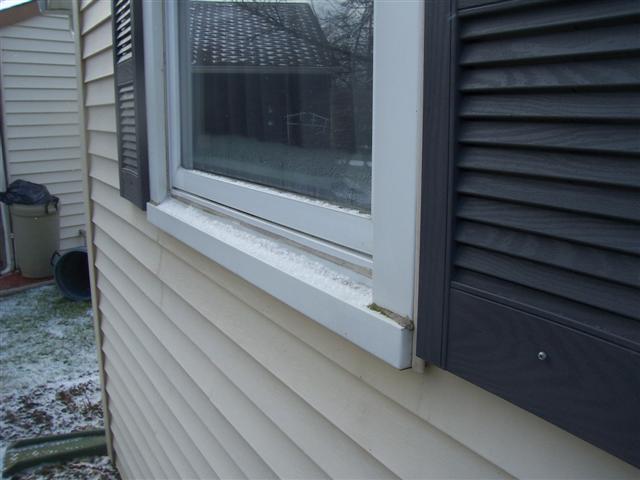I observed condensation & some staining at the windows and it seems the weep holes have been caulked over, what do you think?


I observed condensation & some staining at the windows and it seems the weep holes have been caulked over, what do you think?


Some times they do not even put in weep holes .
I would mention it but doubt if I would write it up
.Roy Cooke
Maybe this kind of inspection would help.
http://buildscanir.com/index.php
It would tell them if they have water intrusion problems.
This might help a little.
http://www.realestateinspector.com/newsletter/flashing.htm
http://www.milgard.com/getting-started/care-and-maintenance.asp
Windows
Windows should be inspected for the exterior condition of their frames, sills and sashes, and for overall operation and fit.
The interior condition and hardware of windows will be examined during the interior inspection. There are eight types of windows and six types of frame material in general use in residential buildings. Frame materials are plastic, aluminum, steel, wood, plastic-clad wood, and metal-clad (steel or aluminum) wood.
Window types are double hung, single hung, casement, horizontal sliding, projected out or awning, projected in, and fixed. In addition to these, there are jalousies: glass louvers on an aluminum or steel frame.
The glazing compound or putty around glass panels in older sashes should be examined especially carefully since this is often the most vulnerable part of the window and its repair is time consuming.
Examine glazing tapes or strips around glass panels in steel or aluminum sashes for signs of deterioration such as hardened sealant or poor fit. Check metal sashes for weep holes that have been blocked by paint, sealant, or dirt. Weep holes are usually easy to clean.
Check windows that are not protected from the weather for the presence of essential flashing at the head.
For windows close to the ground or easily accessible from flat roofs, note the degree of physical security provided by the windows and their locks.
In hurricane regions, check all windows and glass doors that are not protected by shutters to determine if they have been tested for impact resistance to wind-borne debris. If they have not been so tested, determine if plywood panels can be installed for their protection at the time of a hurricane warning
Visual Water: Any operating window, either horizontal slider or single hung (vertical sliding), will leak air and water. This leaking process is called air and water infiltration. This factor is part of the overall testing methods of all window products. Most, if not all, windows are tested using special processes so that the performance can be published. Water infiltration is more visible in a horizontal sliding window, due to one half of the window moving to one side or the other on top of a track. Windows are constructed with weep holes allowing any internal water to weep to the exterior of the home. Single Hung windows also allow water infiltration, however, the sliding section of the window covers the entire sill when closed thus covering any water that may infiltrate the window. Depending on weather conditions it is normal to see water in the sill section of window products. The snap-in replaceable track is cut so that approximately ¼" is left open at each end. This gap is the weep system for the water infiltration. The water will flow to the ends of the track and then drain out of weep holes on the exterior of the window.
Hope this helps.
Marcel 
